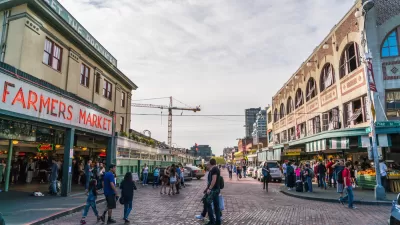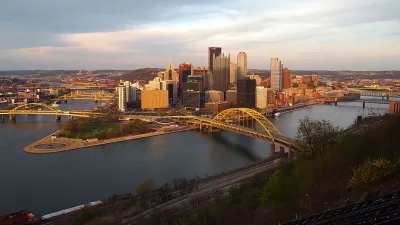Even when they qualify for affordable rents, tenants in high-cost neighborhoods find themselves shut out of essential amenities and services.

Residents who qualify for affordable housing developments are, in some areas, finding the cost of living in their immediate neighborhoods too high. A New York Times article by D.W. Gibson profiles one resident of Southampton, New York, who qualified for an apartment in a development sponsored by the Department of Housing and Urban Development (HUD), but now struggles to afford groceries and other goods locally, such as access to the local beach, which requires a $250 parking permit. “I have to leave here to do my shopping — even the supermarkets are too expensive,” says Liza Coppola. “She says most of the people she knows in the Shinnecock community [where she works] face a similar dynamic of being priced out of the place they live.”
Coppola says she was lucky to snag an apartment in a HUD building, which typically have years-long waiting lists. “Because she’s spent years working on housing issues — first at a nonprofit in Greenport and now with the Shinnecock community — Ms. Coppola knew she would qualify for HUD developments projects intended for people making less than the area median income of $100,722.” But she and others like her find themselves leaving the neighborhood to access affordable services. This dynamic could lead to displacement as residents of increasingly desirable areas find themselves priced out of local amenities, signaling a need for a more comprehensive approach to neighborhood affordability where housing is recognized as one of a number of factors driving displacement.
FULL STORY: The Apartment is Affordable, but the Neighborhood Sure Isn’t

Alabama: Trump Terminates Settlements for Black Communities Harmed By Raw Sewage
Trump deemed the landmark civil rights agreement “illegal DEI and environmental justice policy.”

Planetizen Federal Action Tracker
A weekly monitor of how Trump’s orders and actions are impacting planners and planning in America.

Why Should We Subsidize Public Transportation?
Many public transit agencies face financial stress due to rising costs, declining fare revenue, and declining subsidies. Transit advocates must provide a strong business case for increasing public transit funding.

Understanding Road Diets
An explainer from Momentum highlights the advantages of reducing vehicle lanes in favor of more bike, transit, and pedestrian infrastructure.

New California Law Regulates Warehouse Pollution
A new law tightens building and emissions regulations for large distribution warehouses to mitigate air pollution and traffic in surrounding communities.

Phoenix Announces Opening Date for Light Rail Extension
The South Central extension will connect South Phoenix to downtown and other major hubs starting on June 7.
Urban Design for Planners 1: Software Tools
This six-course series explores essential urban design concepts using open source software and equips planners with the tools they need to participate fully in the urban design process.
Planning for Universal Design
Learn the tools for implementing Universal Design in planning regulations.
Caltrans
Smith Gee Studio
Institute for Housing and Urban Development Studies (IHS)
City of Grandview
Harvard GSD Executive Education
Toledo-Lucas County Plan Commissions
Salt Lake City
NYU Wagner Graduate School of Public Service





























